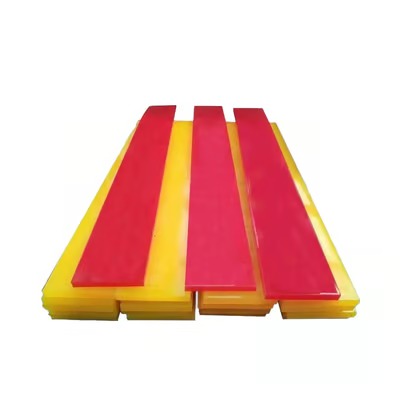An Introduction to Polyurethane Hydrocyclones
Polyurethane hydrocyclones are advanced devices used for efficient solid-liquid separation in various industries, particularly in sand separation applications. These hydrocyclones are designed to remove sand and other solid particles from water or other liquids by utilizing centrifugal force. The use of polyurethane as the material of choice for hydrocyclones offers several advantages, including excellent abrasion resistance, chemical compatibility, and durability.
The Principle of Operation
A polyurethane hydrocyclone operates on the principle of centrifugal force. The mixture of liquid and solid particles enters the hydrocyclone tangentially, creating a swirling motion. As the mixture moves through the hydrocyclone, the centrifugal force causes the denser solid particles, such as sand, to move towards the outer wall of the hydrocyclone. The separated solid particles are then discharged through the underflow outlet, while the clarified liquid exits through the overflow outlet.
Efficient Sand Separation of Polyurethane Hydrocyclones
Polyurethane hydrocyclones are specifically designed to efficiently separate sand particles from liquids. The unique design and construction of these hydrocyclones allow for effective sand separation, even in high-flow rate applications. The combination of centrifugal force and the precise geometry of the hydrocyclone ensures optimal separation efficiency, resulting in cleaner liquids and reduced maintenance requirements.
Advantages of Polyurethane Hydrocyclones
Polyurethane hydrocyclones offer several advantages over alternative materials and separation methods:
- Abrasion Resistance: Polyurethane is highly resistant to abrasion, making it ideal for sand separation applications, where solid particles can cause significant wear on equipment.
- Chemical Compatibility: Polyurethane is chemically inert and can withstand exposure to a wide range of liquids, including corrosive substances, without degradation.
- Durability: Polyurethane hydrocyclones are known for their durability and long service life, even in harsh operating conditions.
- Easy Maintenance: Polyurethane hydrocyclones require minimal maintenance due to their robust construction and resistance to wear and tear.
Applications of Polyurethane Hydrocyclones
Polyurethane hydrocyclones find applications in various industries where solid-liquid separation is crucial. Some common applications include:
- Oil and Gas Industry: Polyurethane hydrocyclones are used for sand separation in oil and gas production, ensuring the quality and efficiency of the produced fluids.
- Mining and Mineral Processing: These hydrocyclones play a vital role in separating sand and other solid particles from slurries in mining and mineral processing operations.
- Wastewater Treatment: Polyurethane hydrocyclones are employed in wastewater treatment plants to remove sand and other solid impurities from the water, improving its quality before discharge or reuse.
- Desanding Systems: These hydrocyclones are utilized in desanding systems to remove sand and debris from drilling mud, enhancing the performance and longevity of drilling equipment.
The Environmental Impact of Polyurethane Hydrocyclones
Polyurethane hydrocyclones contribute to a cleaner and more sustainable environment by effectively separating sand and solid particles from liquids. By removing these contaminants, the risk of pollution and damage to ecosystems is reduced. Additionally, the efficient sand separation provided by polyurethane hydrocyclones improves the overall efficiency of industrial processes, leading to energy savings and reduced waste.
Choosing the Right Polyurethane Hydrocyclone
When selecting a polyurethane hydrocyclone for sand separation, several factors should be considered:
- Flow Rate: Ensure that the hydrocyclone is capable of handling the required flow rate to achieve efficient sand separation.
- Particle Size: Consider the size of the solid particles that need to be separated to choose the appropriate hydrocyclone design.
- Operating Conditions: Evaluate the temperature, pressure, and chemical compatibility requirements to select a hydrocyclone that can withstand the specific operating conditions.
In Conclusion
Polyurethane hydrocyclones offer an efficient and reliable solution for sand separation in various industries. Their unique design and material properties enable optimal solid-liquid separation, resulting in cleaner liquids, improved process efficiency, and reduced maintenance. By choosing the right polyurethane hydrocyclone and implementing it in the appropriate applications, industries can enhance their operations while minimizing environmental impact.

